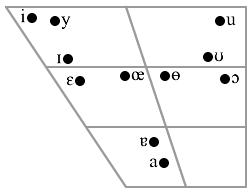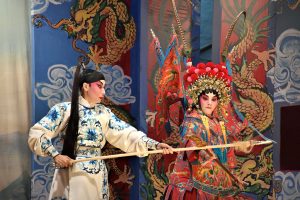As we continue Language of the Month, we go around the world to the Southeast of China, to the language of Hong Kong and Macau, Cantonese. Many companies are looking for “Chinese” speakers to join their companies, and many schools are even introducing “Chinese” classes into their curriculums, but did you know that what we refer to as Chinese is actually the main dialect known as Mandarin? Cantonese is a completely different language, also spoken in China, but is distinctly different from what the average American thinks of as “Chinese.”

While the two languages share characters (more on this later) Cantonese is otherwise unintelligible to a Mandarin speaker. The language gets its name from the Anglicization of Guangzhuo, the most populous city in the southern Chinese province of Guangdong. Unlike the 1.3 billion speakers of Mandarin (the most common first language in the world), Cantonese only claims around 66 million speakers total. The split mostly came from the 19th century, when Beijing Mandarin (or the “courtly” Chinese) started to become the de facto language for the majority of China. Cantonese was already the most popular spoken language in the Pearl River Delta, and commonly used for trade, thus it remained in use and became standardized into what we consider the Cantonese of today.
Cantonese has 19 consonants and a mix of long and short vowels. Like its Mandarin cousin, it also features tones that can affect the meaning of a spoken word. Two completely separate characters can have the same pronunciation, but the intonation will change which word is being said.
What is most interesting about Cantonese and Mandarin, and other Chinese dialects, is that they share the same basic written vocabulary. While there are some differences nowadays (long form versus simplified Chinese characters), a Cantonese speaker who cannot communicate verbally with a Mandarin speaker is often able to write down what he or she wants to say, and now they can understand each other! If the writer is writing in traditional Chinese, a more complex writing system, even a Chinese person from the 14th century would be able to understand them.
As you have seen in its importance in trade routes, Cantonese has a heavy cultural component to it. Something it is known for outside of China, besides its ubiquity in Hong Kong, is the Cantonese opera.  Cantonese opera, while ancient in origin, grew in popularity in the 1950s as more Cantonese speakers moved to Hong Kong, particularly the North Point region. Like other Chinese theater, it features acrobatics, music, martial arts, and more, but most importantly was a way to keep the language popular and relevant as China of the 20th century went through cultural turmoil, including occupations, the end of a dynasty, and other political and social fluctuations.
Cantonese opera, while ancient in origin, grew in popularity in the 1950s as more Cantonese speakers moved to Hong Kong, particularly the North Point region. Like other Chinese theater, it features acrobatics, music, martial arts, and more, but most importantly was a way to keep the language popular and relevant as China of the 20th century went through cultural turmoil, including occupations, the end of a dynasty, and other political and social fluctuations.
More Resources:
https://www.todaytranslations.com/about/language-history/chinese-language-history/
http://www.cityu.edu.hk/lib/about/event/cantonese_opera/origins.htm
